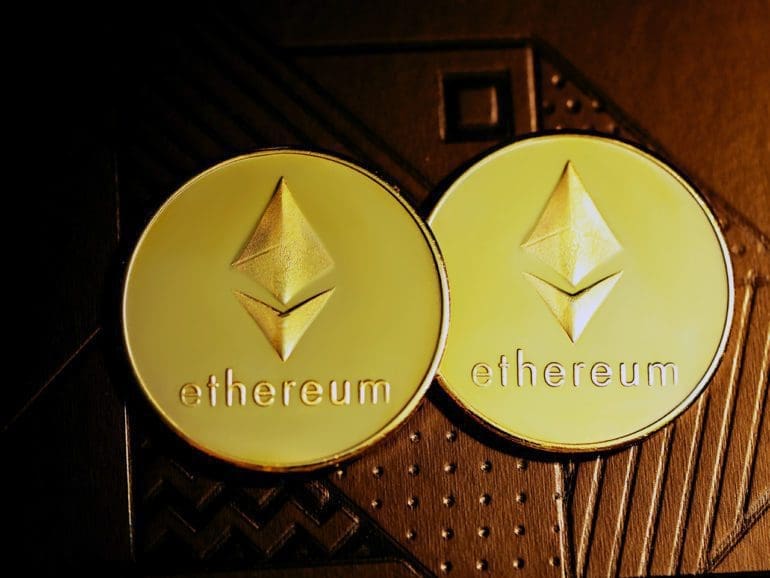Jacobo Toll-Messia’s mission is to scale Layer 2 solutions to the point where they become viable commercial uses and he wants Nahmii to take it there.
Launching in the coming weeks, Nahmii is a Layer 2 for Ethereum built around the Nahmii Virtual Machine (nVM). It provides generalized smart contract support and full composability while leveraging state pool technology to further improve scalability.

Toll-Messia has the background to tackle this task. A software engineer, he built products for the oil and gas and telco industries and has also worked in finance. Fourteen years ago he created a content aggregator that worked with 6,000 sources across 200 countries and 57 languages. They distributed content to 50 million readers per day.
His original vision was to construct a blockchain-based content marketplace but at the time no one was scaling networks for anywhere near 50 million users, so he set out to build one. Such a service would need finality, no latency and have fee predictability.
It’s a complex task, as Toll-Messia discovered when working on his content aggregator. Every time you needed to edit images or add text more latency would be introduced to the system.
“We already knew we’d have to reduce latency as much as possible,” Toll-Messia said.
Tech was raw in 2017
His first impression of blockchain technology back in 2017 was how raw it was. Friction was everywhere.
Still, it was the early days and work continued on the back end as the industry also had to convince enterprise of the viability of this new concept.
“When the pin drops this will be a multi-trillion-dollar industry but the infrastructure must be fixed,” Toll-Messia said.
In finance, institutions spend hundreds of millions of dollars to have a dedicated fibre connection that reduces the distance between two points so they can shave a few milliseconds off transaction times, he observed.
Do you think those same institutions will swoon over a system where latency is added every time transactions are moved to the second layer, bundled and returned to the first layer? Not a chance.
What Ethereum does very well is secure transactions and that is why Nahmii relies on it for security, Toll-Messia said.
Nahmii is a non-custodial platform that uses Ethereum as a complementary system where coins are deposited in the Layer 2. You can then process many transactions there before the batch is transferred to Ethereum for processing.
It produces, fast, cheap and predictable transactions, with accounts settled on chain, a better situation than sidechains and other mechanisms that rely on goodwill, he explained.
That fee predictability is crucial for the finance industry, Toll-Messia said.
Fee predictability crucial
Developers cannot go to venture capitalists and ask for $1 million to cover transaction fees when they have no idea how many transactions that money will cover.
Given the volume of transactions the industry generates, they need to know what they are paying on a per-transaction basis and they want that figure to be as low as possible.
“You can’t take it to market if you don’t know the optics,” Toll-Messia said. “If you build something and deploy the solution on Nahmii, you should know the total cost of operation on Nahmii.”

The Nahmii system determines the gas price internally based on different functions being performed, along with how much it should cost to mint a token.
It also reduces complexity by allowing participants to pay gas fees in the currency they are already using, instead of having to buy an unfamiliar house crypto.
“If you say they need to hold a second token to transact, token users ask why,” Toll-Messia said. “We didn’t do our token so it would be used as a fee token in our network. That is just not the way to go. That is something I believe Polygon is doing and it doesn’t make any sense.”
Some other systems also do not provide price certainty and that holds them back, Toll-Messia contends.
“When they have had a big surge of users their fees have gone up, also the transactions have taken forever to be confirmed,” he said.
“Clearly they cannot offer that level of elasticity and that is why we humbly say they are not ready for commercial adoption. They can have a few thousand users, maybe tens of thousands of users but they are not ready to provide service to millions of users.”
Reducing latency top of list
Nahmii’s state pool technology also reduces latency, he added.
Some systems move transactions to a second layer for processing and then submit them back to the base layer. That adds latency.
Nahmii’s system keeps an open channel between the two layers. Then they add rollups, which are solutions which execute transactions outside the main Ethereum Layer1 chain but post transaction data on that layer. That enables the rollups to be secured by Layer 1.
“On one end you perform transactions on Nahmii by signing messages, yet you rely on the pool security of Ethereum,” Toll-Messia said. “The moment you perform transactions they are considered final and cannot be reverted.”
One of the exciting applications for blockchain is in supply chain management, and Nahmii has one interesting partner doing promising things with its technology.
Fjord Maritime, a Norwegian company, serves companies which breed fish in seafood barges in the North Sea. Those barges normally run on diesel but Fjord Maritime is electrifying them by providing batteries.
Norway provides tax deductions for companies who reduce their carbon footprint but they have to prove how much they reduce their footprint.
Nahmii has developed a system where data from IoT sensors in the batteries and diesel generators are hashed, signed and sent to Nahmii to be stored in an immutable ledger.
Reports are then produced to show how much of the power used came from diesel and how much came from the batteries.
Outlook for Ethereum?
Most in the industry agree Ethereum has won Web 2.0, but how popular will it be in the future?
Some predict new blockchains will be developed that better meet industry’s needs and supplant Ethereum.
Toll-Messia isn’t so sure. He sees a sunk cost where people will stick with Ethereum because they have already invested so much into it. Plus, it’s effective.
“Ethereum is where most innovation takes place today,” he said. “Ethereum is where most of the talent is being attracted to.”
There are already a surge of Layer 2 solutions that can do more for less on Ethereum and that will attract even more talent.
While there will be other blockchain solutions, Toll-Messia expects Ethereum to be the Layer 1 we are still talking about in five years time.
In the coming days and weeks Toll-Messia said his is most excited about the launch of the Nahmii 2.0 mainnet.
It will soon be ready for developers to produce prototypes that take advantage of instant finality, no latency and the ability to pay fees in different currencies.
“It will be ready for instant adoption,” he said.


